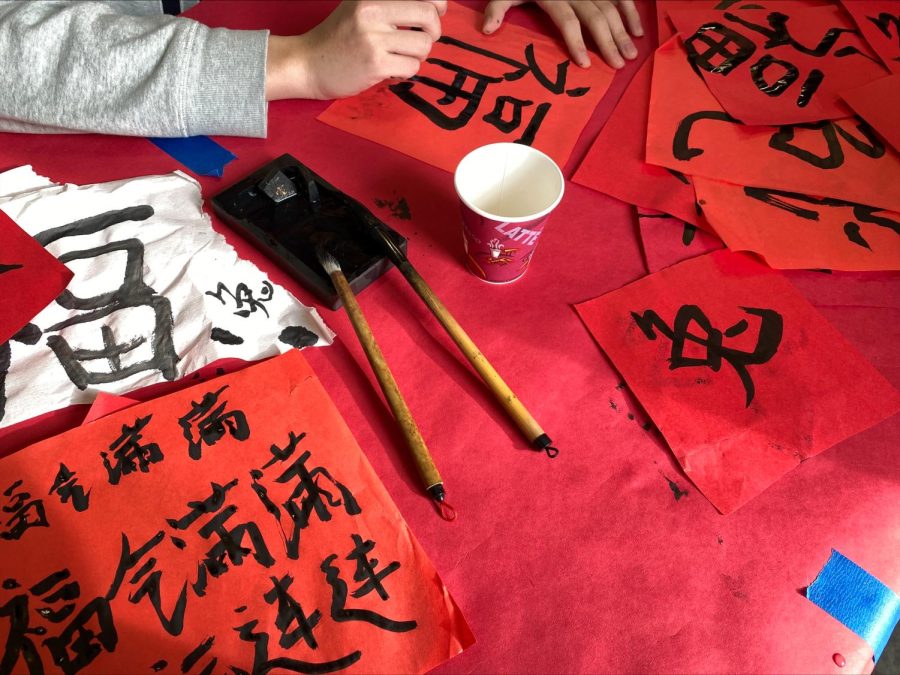Tea Ceremony and Calligraphy
February 11, 2023
At A and B lunch on Feb. 2., the Chinese Club and NCHS jointly carried out activities to promote Asian traditional culture. The main content of this event is to let everyone taste Asian tea and calligraphy.
There are four varieties of tea: green tea, fruit tea, jasmine tea, and oolong tea. These four teas were purchased by the advisor of the Chinese Club, and these are the four most popular teas. The Chinese club prepared a poster with a detailed introduction of the tea and a voting table. Everyone can vote for their favorite tea after tasting. As the Vice President of the Chinese club, Lily Whitman provided help and explanations during the tea ceremony. She also tasted these four teas. “I personally think that oolong has the most unique taste and is my personal favorite,” Whitman said. According to the final vote statistics, fruit tea is the final winner.
Calligraphy is also an important part of Asian culture, especially in China. NCHS provided ideas for this calligraphy event. NCHS has prepared a full set of calligraphy equipment: inkstones, writing brushes, and ink. On the neatly cut square red paper, the students began to create. There is a huge difference between writing with a brush and writing with a pencil. “I have written calligraphy before; my first time was last year in Chinese 2. There is definitely a difference between writing characters with a pencil over a brush, because the brush has more technique and you have less control,” Whitman said.
Although many of the students who participated in the activity had never been in contact with calligraphy, they were also satisfied with their final works. They said it was a strange experience. During the event, many teachers came to join the activities, and they all thought it was a very good publicity event. The officers of the Chinese club and NCHS also said that the event was very successful. Overall, the tea ceremony seems to be more popular because calligraphy is still a bit difficult. “I think that the tea ceremony was most popular, because I feel like some people were afraid to come up and do calligraphy but quite a few people were less scared to come and try many different teas,” Whitman said.
After the event, members of NCHS and the Chinese community came to help clean up the scene. The students collected the brushes and red papers, and NCHS sorted them out and put them in the Chinese classroom. The remaining tea leaves will also be preserved for next year’s tea ceremony.


